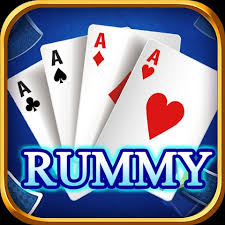Rummy 1000 is a card game played with two or more players, usually using a standard deck of 52 cards. The objective of the game is to form valid combinations of cards—either sets (three or four cards of the same rank) or sequences (three or more cards in consecutive order). The game is called “1000” because players aim to accumulate points, with the goal of reaching a score of 1000 or more to win.
Basic Rules of Rummy 1000
Setup
- Number of Players: Rummy 1000 can be played with 2 to 6 players.
- Deck: A standard 52-card deck is used. In some variations, jokers may be included as wild cards.
- Dealing Cards: Each player is dealt a specific number of cards, typically 13. The remaining cards form the stockpile, and one card is placed face up to start the discard pile.
Objective
The primary goal is to form valid sets and sequences to minimize the total points of unmatched cards in your hand. The game continues until one player reaches or exceeds 1000 points.
Gameplay
- Turn Order: Players take turns in a clockwise direction.
- Drawing Cards: On their turn, a player must draw one card from either the stockpile or the discard pile.
- Melding: After drawing, players may choose to lay down valid sets and sequences on the table. This is optional and can be done at any point during the game.
- Discarding: At the end of their turn, players must discard one card to the discard pile.
Ending a Round
A round ends when one player has formed valid sets and sequences using all their cards. Players then reveal their hands, and points are calculated based on unmatched cards. The game continues until a player accumulates a total of 1000 points.
Scoring in Rummy 1000
Points are scored based on the cards left in players’ hands when a round ends:
- Number Cards (2-10): Face value (2 points for a 2, 10 points for a 10).
- Face Cards (J, Q, K): 10 points each.
- Aces: 1 point each.
- Jokers: Typically 15 points, but this can vary based on house rules.
The player who wins the round receives points based on the total value of unmatched cards from all opponents.
Strategies for Success
- Observe Opponents: Keep an eye on the cards your opponents pick and discard. This can give you insight into their strategies and help you avoid helping them complete their sets or sequences.
- Hold onto High-Value Cards: Be cautious about holding onto high-value unmatched cards as they can significantly impact your score if you lose the round.
- Create Flexible Sets: Try to create sequences and sets that can be easily adjusted as the game progresses, allowing you to adapt to changing situations.
- Discard Wisely: Discard cards that are unlikely to help your opponents. Avoid discarding cards that have already been picked by them.
- Plan for the Endgame: As you approach the end of a round, prioritize getting rid of unmatched cards. Aim to form combinations quickly to avoid carrying high-value cards into the next round.
Conclusion
Rummy 1000 is an exciting and strategic card game that offers a blend of skill, observation, and tactics. Whether you play casually with friends or competitively in tournaments, understanding the rules and strategies can enhance your enjoyment and increase your chances of winning. So gather your cards, sharpen your skills, and get ready for a thrilling game of Rummy 1000.




